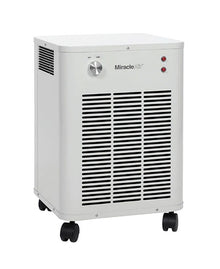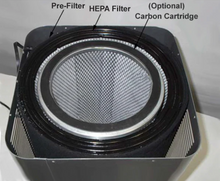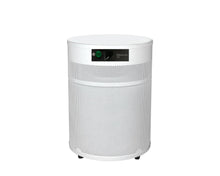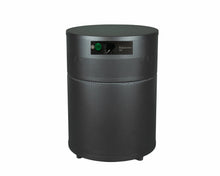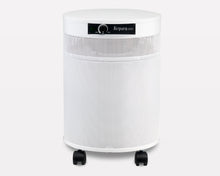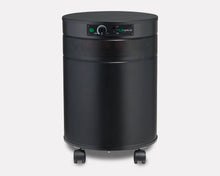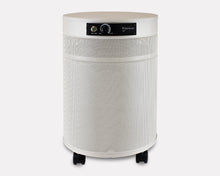Temporary Commercial Smoke Relief: Can Portable Units Help During Short-Term Smoke Events?
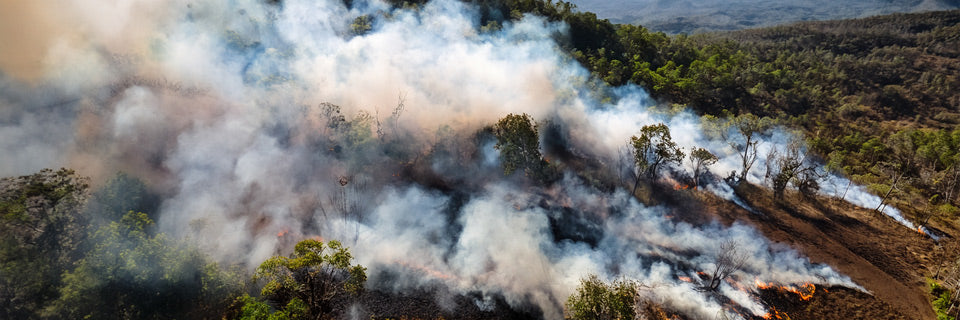
Published: August 19, 2025 | Author: Commercial Air Purifiers Indoor Air Quality Specialist
When wildfire smoke suddenly blankets your commercial building or a nearby industrial fire fills your office with harmful particulates, every minute counts. The thick, acrid air doesn't just create discomfort—it poses real health risks to employees, customers, and visitors. While your building's HVAC system might handle everyday air quality needs, short-term smoke events demand immediate, targeted solutions that can respond faster than permanent infrastructure modifications.
The question facility managers and business owners increasingly face isn't whether smoke events will happen, but how quickly they can protect their indoor environment when they do. With portable air purification units emerging as a frontline defense, understanding their effectiveness during these critical moments could mean the difference between maintaining operations and shutting down until the air clears.
The Growing Reality of Commercial Smoke Events
Commercial buildings face smoke intrusion from multiple sources beyond the widely publicized wildfire seasons. Manufacturing incidents, nearby structure fires, controlled burns, and even transportation accidents can suddenly compromise indoor air quality. According to recent EPA data, EPA is collaborating with partners to develop guidance to protect those who are in schools, commercial buildings and other public buildings from wildfire smoke exposure, highlighting the growing recognition of this challenge.
The impact extends far beyond temporary discomfort. Smoke particulates, particularly PM2.5 particles smaller than 2.5 micrometers, penetrate deep into respiratory systems and can trigger asthma attacks, exacerbate cardiovascular conditions, and cause immediate symptoms like eye irritation, coughing, and headaches. For commercial spaces housing vulnerable populations—such as healthcare facilities, schools, or senior centers—the stakes are even higher.
Traditional building HVAC systems, designed for general air circulation and temperature control, often struggle with sudden, high-concentration smoke events. Their filters may not be rated for fine particulates, air exchange rates might be insufficient, and the time required to modify central systems during an active smoke event is simply impractical. This gap between emergency need and existing infrastructure has driven increased interest in rapid-deployment solutions.
The economic implications are equally significant. Businesses forced to close during smoke events face immediate revenue loss, while those that remain open with compromised air quality risk employee health issues, reduced productivity, and potential liability concerns. Understanding how portable air purification fits into emergency response planning has become a critical business continuity consideration.
How Portable Air Purifiers Combat Commercial Smoke Infiltration
The science behind portable air purifiers' effectiveness against smoke is both straightforward and sophisticated. High-Efficiency Particulate Air (HEPA) filters, the gold standard in portable units, capture 99.97% of particles 0.3 micrometers and larger—well within the range needed to address dangerous smoke particulates. Research published in the American Journal of Respiratory and Critical Care Medicine demonstrates that HEPA purifiers can reduce indoor PM2.5 concentrations by approximately 50–80%, even in countries with relatively high ambient pollution levels, suggesting that they are effective in a wide range of real-world conditions.
The key advantage of portable units lies in their rapid deployment capability. Unlike central HVAC modifications that might take days or weeks to implement, portable units can be strategically positioned and operational within minutes of a smoke event beginning. Their effectiveness depends on several critical factors: room size relative to the unit's Clean Air Delivery Rate (CADR), placement strategy, and the specific filtration technology employed.
For commercial applications, the most effective portable units combine HEPA filtration with activated carbon filters to address both particles and gaseous pollutants. While smoke particles represent the immediate health concern, the chemical compounds that create smoke's distinctive odor and additional health risks require different treatment approaches. Activated carbon's adsorption properties capture these volatile organic compounds (VOCs) and other gaseous pollutants that HEPA filters cannot address.
Recent EPA research on DIY air cleaners provides valuable insights into portable unit effectiveness. The results of this study, published in November 2022, demonstrate that DIY air cleaners can effectively reduce smoke concentrations in a laboratory setting. If simple DIY units show measurable results, professionally manufactured portable air purifiers with superior filtration and higher airflow rates demonstrate even greater potential for commercial applications.
The positioning and quantity of units significantly impacts results. Rather than relying on a single large unit, many commercial facilities find success with multiple smaller units strategically placed to create overlapping clean air zones. This approach allows for targeted protection of critical areas—such as reception desks, conference rooms, or areas housing sensitive equipment—while maintaining operational flexibility.
Air circulation patterns within commercial spaces also influence effectiveness. Portable units work best when positioned to take advantage of natural air movement, avoiding corners where smoke might accumulate and ensuring filtered air reaches occupied zones. Understanding your building's unique air circulation characteristics helps optimize portable unit placement for maximum impact during smoke events.
Real-World Performance: What the Research Shows
Australian researchers recently conducted field studies examining portable air cleaner effectiveness in residential settings during prescribed burn smoke events, providing practical insights applicable to commercial environments. HEPA cleaners could be a practical and useful way to protect against smoke exposure in residential homes, according to this Australian study showing they improved indoor air quality during smoke events due to prescribed burns. While residential and commercial applications differ in scale, the fundamental principles of smoke particulate reduction remain consistent.
The research reveals several important performance characteristics. Portable HEPA units demonstrate their greatest effectiveness within the first 30-60 minutes of operation, rapidly reducing particulate concentrations in enclosed spaces. This quick response time aligns perfectly with the urgent nature of smoke events, where immediate action provides the greatest health protection benefits.
However, the studies also highlight limitations that commercial users must understand. Effectiveness decreases in spaces with high air leakage, where continuous smoke infiltration overwhelms the unit's cleaning capacity. This finding emphasizes the importance of temporarily sealing obvious air leaks—such as gaps around doors and windows—when using portable units during active smoke events.
The size-to-effectiveness relationship proves crucial for commercial applications. Units rated for residential rooms (typically 200-400 square feet) require multiple units or larger commercial-grade models to address typical office spaces, retail environments, or warehouse areas. Calculating the appropriate coverage based on both room volume and expected air exchange rates ensures realistic performance expectations.
Field testing also demonstrates that portable units perform better as part of an integrated approach rather than standalone solutions. Combining portable air purification with building HVAC adjustments—such as switching to recirculation mode and closing fresh air intakes during smoke events—amplifies overall effectiveness while reducing the burden on portable units.
One particularly relevant finding relates to filter saturation during intense smoke events. Extended exposure to high particulate loads can reduce filter effectiveness more quickly than normal operation, requiring more frequent filter changes or backup units to maintain protection levels. This operational reality impacts both planning and budgeting for emergency smoke response protocols.
Strategic Implementation for Commercial Spaces
Successful commercial implementation of portable air purifiers for smoke events requires moving beyond simply purchasing units and hoping for the best. The most effective approaches integrate portable units into comprehensive emergency response plans that account for building-specific factors, occupant needs, and operational continuities.
Start with a realistic assessment of your space's vulnerability and requirements. Buildings with older HVAC systems, poor building envelope integrity, or locations in high-risk areas (near industrial facilities, wildfire-prone regions, or heavily trafficked areas) benefit most from portable unit preparation. Consider both the physical characteristics of your space and the health needs of typical occupants when sizing and selecting equipment.
Develop zone-based protection strategies rather than attempting to purify entire buildings uniformly. Identify critical areas that must maintain operations during smoke events—such as server rooms, customer service areas, or essential work zones—and plan portable unit deployment to prioritize these spaces. This targeted approach makes limited resources more effective while maintaining essential business functions.
Storage and maintenance planning proves as important as initial purchase decisions. Portable units stored in basements or storage areas may not be accessible during emergencies, while units kept in occupied spaces require regular maintenance to remain functional when needed. Establish clear protocols for unit location, maintenance schedules, and deployment procedures that all relevant staff understand.
Consider the integration between portable units and existing building systems. During smoke events, coordination between portable air purifiers and HVAC operations can dramatically improve results. Simple steps like switching HVAC systems to recirculation mode, closing fresh air dampers, and sealing obvious air leaks work synergistically with portable units to create more effective protection.
Staff training and communication protocols ensure that portable units actually get deployed effectively when needed. The confusion and urgency of smoke events can lead to poor decision-making unless clear procedures exist. Designate specific individuals responsible for unit deployment, establish communication protocols for smoke event responses, and conduct periodic drills to identify potential implementation challenges before real emergencies occur.
Choosing the Right Equipment for Emergency Response
The portable air purifier market offers numerous options, but emergency smoke response demands specific capabilities that differ from general air quality improvement needs. Understanding these requirements helps facility managers select equipment that performs when it matters most.
HEPA filtration represents the non-negotiable foundation, but the quality and design of HEPA filters varies significantly between manufacturers. Look for units with sealed filter housings that prevent air bypass—a common issue in lower-cost models that dramatically reduces effectiveness. True HEPA filters (99.97% efficiency at 0.3 micrometers) outperform HEPA-type or HEPA-style filters that may use less stringent standards.
Clean Air Delivery Rate (CADR) provides the most meaningful comparison metric for commercial applications. CADR measures the volume of filtered air delivered per minute, typically rated separately for dust, pollen, and smoke. Focus on smoke CADR ratings, as these directly relate to wildfire and fire smoke particle removal capabilities. For commercial spaces, units with smoke CADR ratings above 200 CFM typically provide meaningful results in appropriately sized areas.
Noise levels become critical in commercial environments where communication and normal operations must continue during smoke events. Units that produce excessive noise may create additional problems in customer-facing areas or spaces requiring concentration. Look for models offering multiple fan speeds that allow users to balance cleaning power with noise production based on specific situations.
Activated carbon capacity matters for addressing the odors and chemical compounds associated with smoke events. While HEPA filters capture particles, the distinctive smell and many harmful chemicals in smoke require chemical adsorption. Units with substantial activated carbon filters (typically several pounds of carbon) provide more comprehensive protection than those with token carbon elements.
Consider power requirements and electrical infrastructure limitations. High-performance portable units often require significant electrical power, potentially overloading circuits if multiple units operate simultaneously. Verify that your facility's electrical capacity can support planned unit deployment without creating additional safety hazards during emergency situations.
Portability features—despite the name—vary widely between models. Units intended for emergency deployment benefit from robust wheels, comfortable handles, and compact designs that fit through standard doorways and into service elevators. Models designed primarily for permanent installation may lack the mobility features essential for rapid emergency response.
Frequently Asked Questions
How quickly do portable air purifiers start working during smoke events? Most quality portable air purifiers begin reducing airborne particulates within 15-30 minutes of operation, with maximum effectiveness typically achieved within the first hour. However, the initial improvement can be noticeable within the first few minutes in smaller spaces.
Can portable units handle smoke from large fires or just minor smoke events? Portable units work best with moderate smoke infiltration rather than overwhelming smoke concentrations. During major fire events with dense smoke, they provide meaningful improvement but may not achieve complete air clearing. They're most effective when combined with other protective measures like sealing air leaks.
How do I calculate how many units I need for my commercial space? A general rule suggests 1 CFM of smoke CADR per 1.5 square feet of space, but this varies based on ceiling height, air leakage, and smoke intensity. For example, a 1,000-square-foot office might require units providing approximately 650-700 CFM of combined smoke CADR.
Do portable air purifiers work if the building's HVAC system is still running? Yes, but coordination improves results. During smoke events, switching HVAC systems to recirculation mode (closing fresh air intakes) prevents additional smoke infiltration while allowing portable units to focus on cleaning already-contaminated indoor air.
How often do filters need replacement during smoke events? Filter replacement frequency depends on smoke intensity and duration. During severe events, pre-filters may require replacement every few days, while HEPA filters might last weeks to months. Visual inspection and airflow monitoring help determine replacement timing.
Are there any safety concerns with using multiple portable air purifiers simultaneously? The primary concern involves electrical load. Multiple high-powered units can overload circuits, so verify electrical capacity before deployment. Also ensure units don't block emergency exits or create tripping hazards during evacuation procedures.
Conclusion: Building Resilience Against Unpredictable Smoke Events
The evidence clearly demonstrates that portable air purifiers can provide meaningful protection during short-term commercial smoke events, but their effectiveness depends entirely on proper planning, appropriate equipment selection, and realistic expectations about their capabilities. They represent a valuable tool in emergency response planning rather than a complete solution.
The research shows that HEPA purifiers can reduce indoor PM2.5 concentrations by approximately 50–80%—a significant improvement that can mean the difference between safe indoor air and harmful conditions. However, this effectiveness requires strategic implementation, proper equipment sizing, and integration with other protective measures.
As smoke events become more frequent and unpredictable, the businesses that thrive will be those that prepare proactively rather than react after problems develop. Portable air purifiers offer a practical, deployable solution that can maintain air quality during critical periods, protecting both human health and business continuity.
The key lies in understanding that portable units work best as part of a comprehensive emergency response strategy. Combined with proper planning, staff training, and realistic deployment protocols, they provide commercial facilities with a powerful tool for maintaining safe indoor environments when outdoor air quality fails.
For facility managers considering portable air purification for emergency smoke response, start with a thorough assessment of your space's specific needs, research equipment options that match your requirements, and develop deployment procedures that your team can execute effectively under pressure. The investment in preparation today could prove invaluable when the next smoke event occurs.
For more information about improving indoor air quality in commercial settings, consult EPA guidelines for commercial building air quality management and consider working with indoor air quality professionals to develop comprehensive emergency response protocols specific to your facility's needs.

